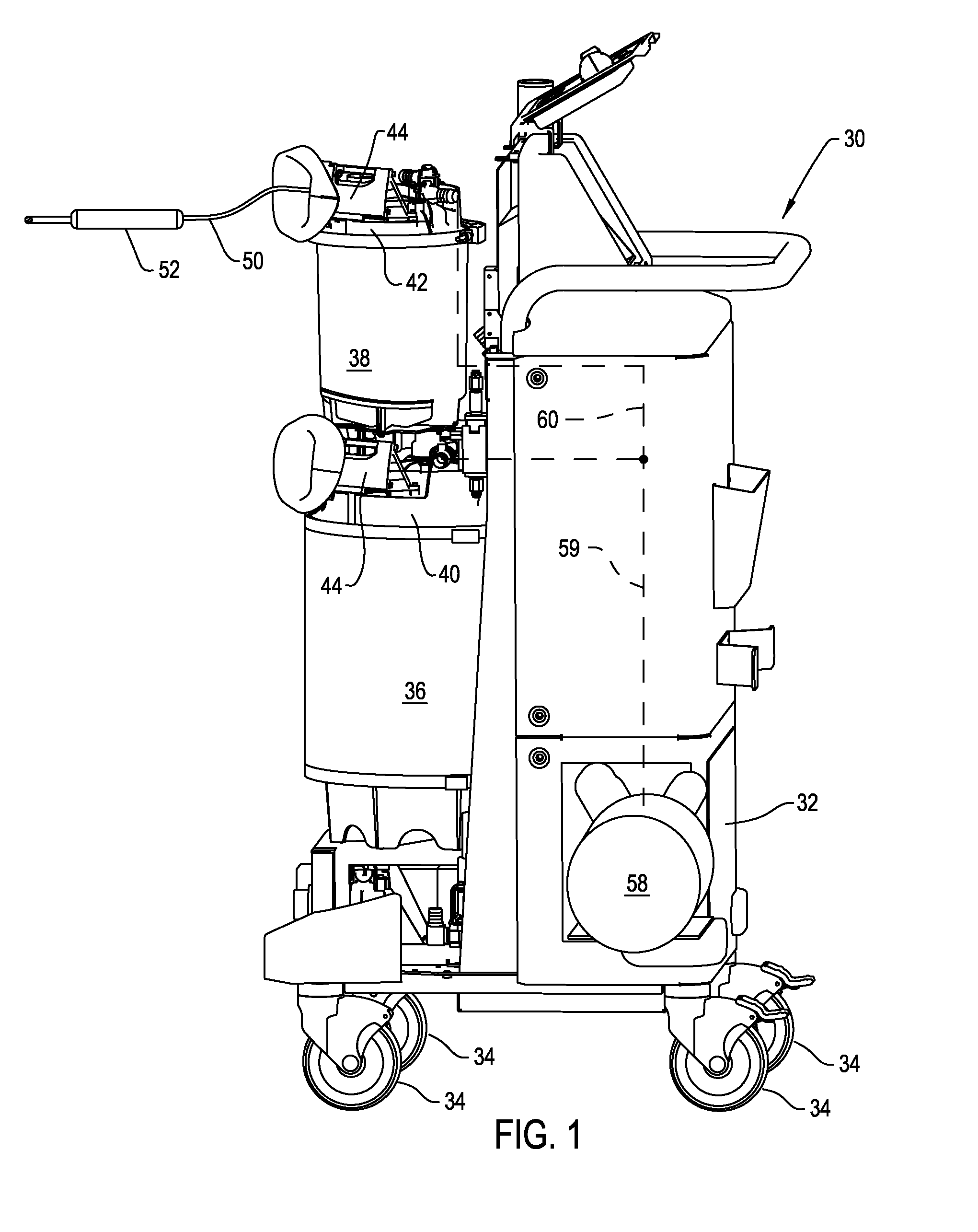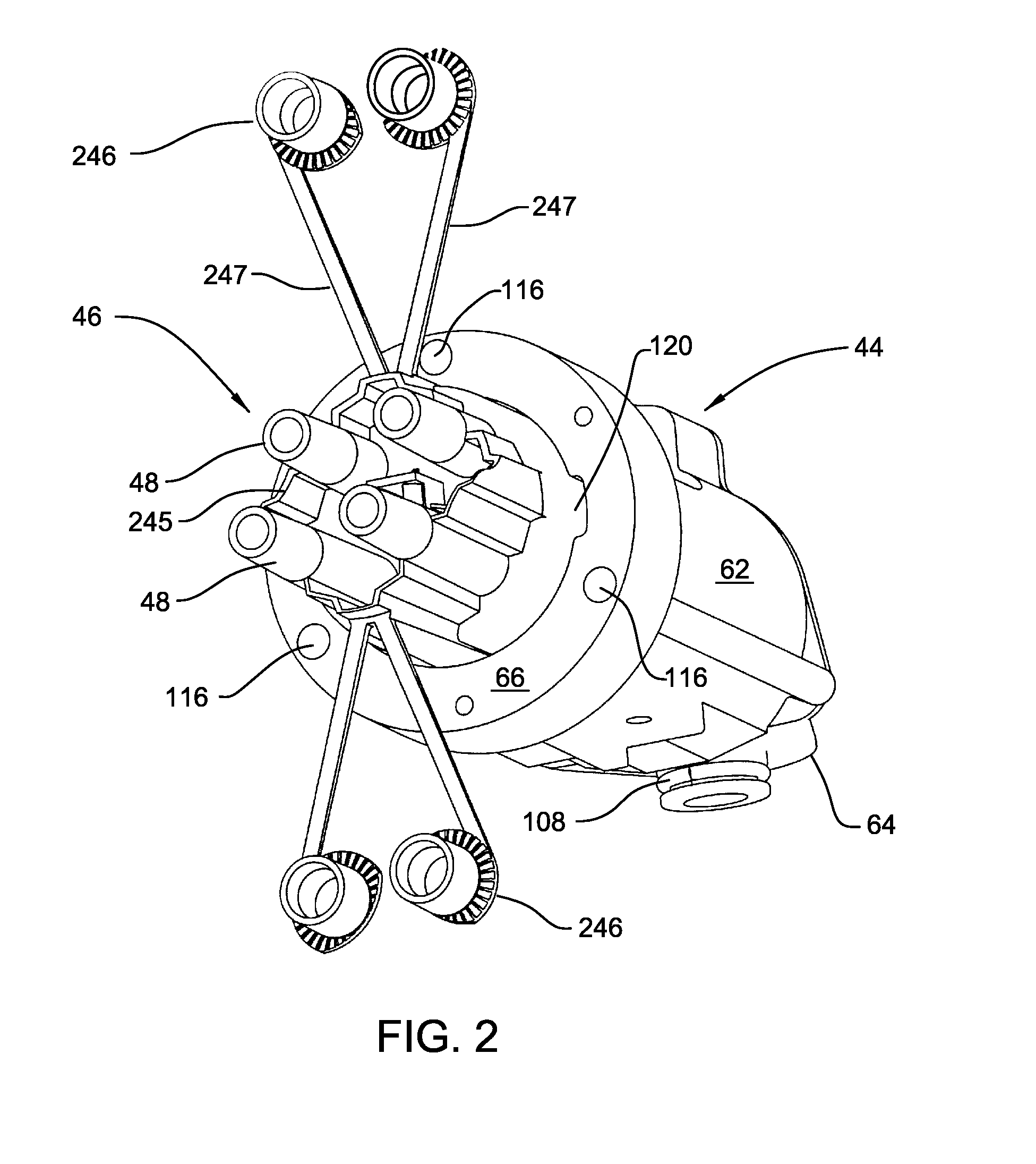Removable inlet manifold for a medical/surgical waste collection system, the manifold including a driver for actuating a valve integral with the waste collection system
a waste collection system and intake manifold technology, applied in the direction of suction drainage containers, separation processes, filtration separation, etc., can solve the problems of clogging the down line components of the system, reducing the extent of the suction tubing, clutter, etc., and achieving the effect of reducing the release of uncontained fluids
- Summary
- Abstract
- Description
- Claims
- Application Information
AI Technical Summary
Benefits of technology
Problems solved by technology
Method used
Image
Examples
Embodiment Construction
I. Overview
[0038]FIG. 1 illustrates a waste collection system 30 constructed in accordance with this invention. System 30, sometimes referred to as a mobile unit, includes a base 32. The cover and door assemblies that normally conceal the components are mobile unit 30 are not present in FIG. 1 so that these components can be seen. Wheels 34 attached to the bottom of the base 32 provide the system with mobility. Two canisters 36 and 38 are mounted to the base 32. A first one of the canisters, canister 36, has a relatively large interior volume, between approximately 10 and 40 liters. The second canister, canister 38, has a smaller volume, between approximately 1 and 10 liters. Each canister 36 and 38 has a cap 40 and 42, respectively.
[0039]Attached to each canister cap 40 and 42 is a manifold receiver 44. A manifold 46, seen in FIGS. 2 and 3, is removably seated in each manifold receiver 44. As described below, each manifold 46 is formed with a number of fittings 48. Each fitting 48 ...
PUM
| Property | Measurement | Unit |
|---|---|---|
| interior volume | aaaaa | aaaaa |
| interior volume | aaaaa | aaaaa |
| volume | aaaaa | aaaaa |
Abstract
Description
Claims
Application Information
 Login to View More
Login to View More - R&D
- Intellectual Property
- Life Sciences
- Materials
- Tech Scout
- Unparalleled Data Quality
- Higher Quality Content
- 60% Fewer Hallucinations
Browse by: Latest US Patents, China's latest patents, Technical Efficacy Thesaurus, Application Domain, Technology Topic, Popular Technical Reports.
© 2025 PatSnap. All rights reserved.Legal|Privacy policy|Modern Slavery Act Transparency Statement|Sitemap|About US| Contact US: help@patsnap.com



